
Rarely did her own sketching because of her time schedule. Almost all sketches of "hers" one sees today were actually done by a devoted staff of sketch artists.
During the 1920s, she taught French and art at the Hollywood School for Girls.
On They Might Be Giants' 2001 album, "Mink Car", there is a song called "She Thinks She's Edith Head".
Was a close friend of actress Anne Baxter. She was godmother to one of Baxter's children.
A photograph of Miss Head working on a dress design appears on one stamp of a sheet of 10 USA 37¢ commemorative postage stamps, issued 25 February 2003, celebrating American Filmmaking: Behind the Scenes. The stamp honors costume design.
The character "Edna Mode" in Disney/Pixar's The Incredibles (2004) was modeled on her.

Extremely diplomatic, she went out of her way to get along with co-workers and rarely gossiped. In later interviews, however, she mentioned that she did not enjoy working with Mary Martin, Claudette Colbert or Hedy Lamarr.
Her trademark "sunglasses" were not "sunglasses" but rather blue lensed glasses. Looking through a blue glass was a common trick of costumers in the days of Black and White film to get a sense of how a color would photograph.
 Edith had a pair of glasses made out of the proper shade of blue glass to save herself from looking through a single lens. Her friends commonly would see her in regular "clear" glasses.
Edith had a pair of glasses made out of the proper shade of blue glass to save herself from looking through a single lens. Her friends commonly would see her in regular "clear" glasses.She is tied with composer Alan Menken for third most Academy Awards won. Each of them have eight.
Biography in: "The Scribner Encyclopedia of American Lives". Volume One, 1981-1985, pages 376-378. New York: Charles Scribner's Sons, 1998.
Alumnae Initiate of Delta Zeta sorority, Mu chapter.
Born on October 28, 1897, her family moved to San Bernadino, California when she was very young. She received a BA in French at the University of Californai at Berkeley in 1918 and an MA in Romance Languages from Stanford University in 1920. She became a Languages teacher (specializing in French). Her first teaching position was at Bishops School in La Jolla, California; however after one year she took a position teaching both Languages and Art at Hollywood School for Girls. To improve her drawing skills (which at this point were rudimentary) she took evening art classes at Chouinard Art College.
In 1924, despite lacking art design or costume design experience, Head was hired as a costume sketch artist at Paramount Pictures in the costume department. Later Head admitted to borrowing another student's sketches for her job interview. She began designing costumes for silent films commencing with The Wanderer in 1925, and by the 1930s had established herself as one of Hollywood's leading costume designers. She worked at Paramount for 44 years until she went to Universal Pictures on March 27, 1967, possibly prompted by her extensive work for director Alfred Hitchcock, who had moved to Universal in 1960.

She was responsible for some of the best-known Hollywood fashion images of her day, with her costumes being worn by the most glamorous and famous actresses in films. Head's influence on world fashion was far reaching, especially in the 1950s when she began appearing on Art Linkletter's television program and writing books on fashion.
Although Head was featured in studio publicity from the mid-1920s onward, she was originally over-shadowed by Paramount's Head Designer, first Howard Greer then Travis Banton. It was only after Banton's resignation in 1938 that she achieved fame as a designer in her own right. Her association with the "sarong" dress designed for Dorothy Lamour
 in The Hurricane made her well known among the general public, albeit as a more restrained designer than either Banton or Adrian. In 1944 she gained public attention for the top mink-lined gown she was credited with designing for Ginger Rogers in Lady in the Dark,
in The Hurricane made her well known among the general public, albeit as a more restrained designer than either Banton or Adrian. In 1944 she gained public attention for the top mink-lined gown she was credited with designing for Ginger Rogers in Lady in the Dark,  which gained notoriety as it was counter to the mood of wartime austerity. The institution of an Academy Award for Costume Designer in 1949 further boosted her career as it began her record breaking run of Award nominations and awards, beginning with her nomination for The Emperor Waltz.
which gained notoriety as it was counter to the mood of wartime austerity. The institution of an Academy Award for Costume Designer in 1949 further boosted her career as it began her record breaking run of Award nominations and awards, beginning with her nomination for The Emperor Waltz.Head was known for her low-key working style, and unlike many of her male contemporaries usually consulted extensively with the female stars she worked with. As a result she was a favourite designer for several of the leading female stars of the 1940s and 1950's; Ginger Rogers, Bette Davis, Barbara Stanwyck, Shirley Maclaine and Anne Baxter, and was frequently 'loaned' out by Paramount to other studios at the request of their female stars.
 She was also known for her restrained designs, and during the 1950s was dubbed the "queen of the shirtwaisters" by her detractors. However, it should be noted that this approach to costume design was in line with studio policy which did not want films (especially late release or re-released films) to become instantly dated through the use of short-lived costume fads. Despite this, or even because of this trait, she has been cited as one of Alfred Hitchcock's favorite custome designers and had a long association with Hal Wallis among others.
She was also known for her restrained designs, and during the 1950s was dubbed the "queen of the shirtwaisters" by her detractors. However, it should be noted that this approach to costume design was in line with studio policy which did not want films (especially late release or re-released films) to become instantly dated through the use of short-lived costume fads. Despite this, or even because of this trait, she has been cited as one of Alfred Hitchcock's favorite custome designers and had a long association with Hal Wallis among others.
During her long career Head was occasionally criticized for her working methods. Early in her career she opposed the creation of a union to represent studio based costume designers and outfitters, and she was accused of being "anti-union" on several occasions. Her design trademark of restraint also on occasion brought her into conflict with the wishes of film stars or directors. Claudette Colbert apparently being one star who preferred not to work with her, while her relationship with flamboyant film director Mitchell Leisen was by all accounts quite tense. Despite her own design accomplishments, she also had a reputation for taking credit for others' work. However, this practice only became controversial in the latter part of her career, since in the era of studio-dominated film production, a department head commonly claimed credit for design work created in his or her department. Privately, she was a warm and loving hostess, hosting fabulous soirées at her and her husband's Benedict Canyon home.
In 1967, she left Paramount Pictures,
 and joined Universal Pictures, where she remained until her death in 1981. As studio-based feature film production declined, and many of her favoured stars retired, Head became more active as a television costume designer, often designing costumes for film actresses, like Olivia De Havilland, who were now involved in television series or film work. In 1974, Edith Head enjoyed a final Oscar win for her work on The Sting. This film, which starred Paul Newman and Robert Redford, was notable for its nostalgic recreation of American life in the 1930s.
and joined Universal Pictures, where she remained until her death in 1981. As studio-based feature film production declined, and many of her favoured stars retired, Head became more active as a television costume designer, often designing costumes for film actresses, like Olivia De Havilland, who were now involved in television series or film work. In 1974, Edith Head enjoyed a final Oscar win for her work on The Sting. This film, which starred Paul Newman and Robert Redford, was notable for its nostalgic recreation of American life in the 1930s.During the late 1970s, Edith Head was asked to design a woman's uniform for the United State Coast Guard because of the increasing number of women in the Coast Guard. Head called the assignment a "highlight" in her career.
 Also, during this period, her designs for a TV mini-series based on the novel Little Women were notable. Her last film project was the black and white comedy Dead Men Don't Wear Plaid, starring Steve Martin and Carl Reiner, in which she accurately re-created fashions of the 1940s, matching the extensive use of film clips from classic film noir motion pictures. It was released shortly after her death and dedicated to her memory.
Also, during this period, her designs for a TV mini-series based on the novel Little Women were notable. Her last film project was the black and white comedy Dead Men Don't Wear Plaid, starring Steve Martin and Carl Reiner, in which she accurately re-created fashions of the 1940s, matching the extensive use of film clips from classic film noir motion pictures. It was released shortly after her death and dedicated to her memory.Head was a very private woman, a trait well illustrated by the dark sunglasses that became her trademark. The glasses and her unchanging hair style helped her to hide her true age. In the 1920s, she wore a Colleen Moore Dutch boy cut, but in the 1930s she noticed Anna May Wong's style and copied it: flat bangs with a chignon at the back. She would wear it for the rest of her life. These features and the consistency of her appearance over the decades helped make her an instantly recognized figure.
She died on October 24, 1981 in her sleep while coughing violently, and ruptured her esophagus. The cough resulted from a rare bone marrow disease.
She has a star on the Hollywood Walk of Fame at 6504 Hollywood Blvd.
Personal Quotes
"I've designed films I've never seen."
"If it is a Paramount film, I probably designed it."
"What a costume designer does is a cross between magic and camouflage. We create the illusion of changing the actors into what they are not. We ask the public to believe that every time they see a performer on the screen he's become a different person."
"I have yet to see one competely unspoiled star, except for Lassie."
"You can lead a horse to water and you can even make it drink, but you can't make actresses wear what they don't want to wear."
[1977 comment on Jacqueline Bisset] "One of the greatest bodies I've ever worked with. But besides that she is rather the opposite, because she is so damned intelligent. It's a strange combination, almost a double personality."
[on Grace Kelly] "I've dressed thousands of actors, actresses and animals, but whenever I am asked which star is my personal favorite, I answer, "Grace Kelly." She is a charming lady, a most gifted actress and, to me, a valued friend."
[on Kim Novak] "I don't usually get into battles, but dressing Kim Novak for her role in Alfred Hitchcock's "Vertigo" put to the test all my training in psychology."

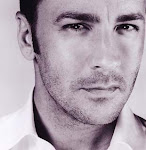

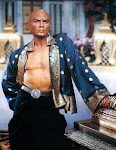
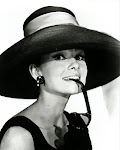




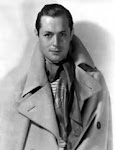

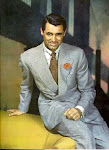
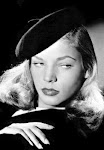



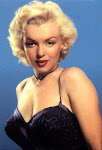
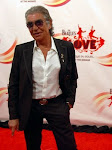




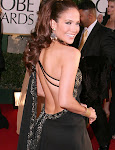
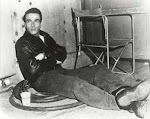




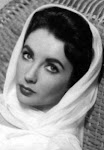

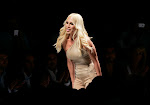




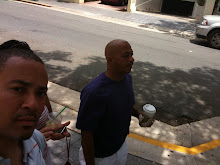
Loved, The Incredibles
ReplyDelete